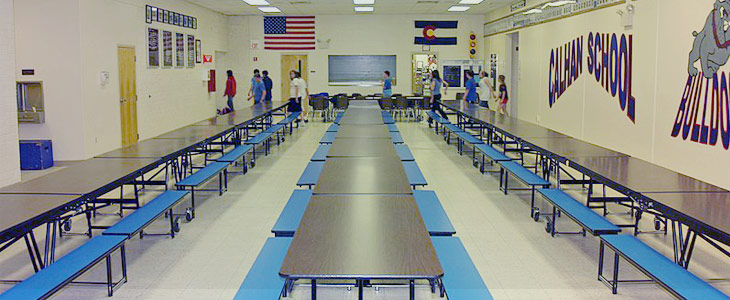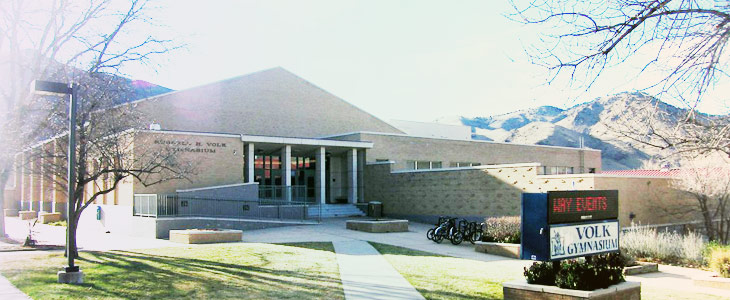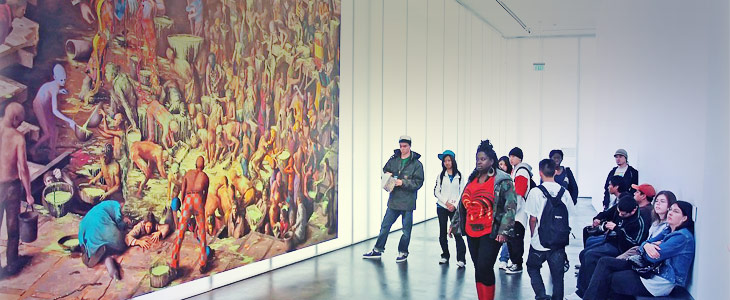There are serious issues to be discussed related to the reactions to recent school shootings in Colorado state.
Can People Learn How to Handle Life-Threatening Situations?
There is a new trend in Colorado schools regarding school safety. Nowadays, the training includes the youngest students who learn how to help their teacher block the door and prevent shooters from entering the classroom. When they come to middle school, experts will show them how to pin the attacker to the ground and make them stay down.
Training gets more serious in high school where teenagers learn how to recognize the perfect timing to fight the shooter. The main point of this new and more serious safety training is that children have to take care of things themselves.
This all comes in the wake of recent tragic events that resulted in a loss of two young lives. Namely, two teenagers died while fighting the shooter.
While these two tragic heroes deserve to be praised for their deeds, child psychologists oppose this glorification of their deaths that, according to them, starts to resemble super-hero stories. They also fear the risk of exposing children to firearms as a part of self-defense training.
A SWAT Officer Offers Active-Shooter Training to Students
Joe Deedon is a member of the SWAT team that took down the school shooter in 2006 after he had shot one student and held a number of them hostage at Platte Canyon High. This officer started getting numerous requests to consider including students in his active-shooter training after another school shooting incident in Florida. Up to that point, he held his training for teachers and school staff.
The number of these appeals increased again after the shooting that happened last month at STEM School Highlands Ranch.
Deedon has worked with school children in Arizona and Wyoming so far. He hasn’t cooperated with any of the Colorado school districts yet. But he believes that the open-enrollment student training he scheduled for July in Denver will show that there is a considerable interest for his services in this state.
He assumes that school authorities are reluctant to call him and ask for his services because they fear the whole training is going to be a traumatizing experience. He dismisses these fears immediately by saying that his aim is not to make students risk their lives. According to him, all he wants to do is to teach young people how to react if the “worst case” scenario takes place, at school or any other public place.
He emphasizes that no one wants the kids to think they should act like superheroes and lose their lives.
The first heroic act the American public cannot stop talking about is the act of a senior student at Highlands Ranch who lost his life fighting a fellow student who had a gun. Kendrick Castillo was shot three days before his graduation.
Another horrible shooting incident happened almost at the same time as the first one, in front of a college in North Carolina. The tragic hero, Riley Howell, was a college student who threw himself in front of the shooter.
The Focus on Heroic Victims May Have Countereffects on Children
The reaction of the public to the series of tragic deaths was an exaggerated outpour of collective sympathy that flooded the media and social networks. The word “hero” soon became overused, and you could hear it in every account of these tragic deaths. It was time for the National Association of School Psychologists to point out how potentially dangerous this glorification of death may be.
These experts claim they realize this is a way to pay respects to the ultimate sacrifice of these two young men. They add that they also understand the people’s need to find relief in emotional outpours and “big” words. However, they emphasize that glorification of heroic deaths may have countereffects on children who may think that jumping in front of a gun is something they have to do if they want to be heroes.
Soon after the incident at Highlands Ranch, the whole community was covered in billboards with the same message of gratitude that put Kendrick in focus. The same situation happened at his memorial services, with lines of people carrying signs with the same message. His colleagues from the robotics team made two robots that were holding a banner saying “A Hero 4 Heroes.”
The fact that Kendrick was an only child lifted the public sympathy to the next level emphasizing his act of sacrifice additionally.
American media learned the hard way to put a spotlight on the victim and not the killer. They started applying this technique after the 1999 Columbine High School murders and accepted it as the standard after the shooting at the Aurora Theater in 2012.
So it doesn’t seem surprising that social media are overwhelmed with “remember his name” posts or “Honor the Hero, not the Killer,” a circular message that lingered on the network for weeks.
Giving killers an excessive amount of media attention in the past had led to the appearance of copycats who tried to catch the public eye by imitating the “original” crime.
Now, psychologists warn that putting someone’s heroic death into focus for so long may also bring severe countereffects. No one aims to undermine the grandeur of heroic acts everyone is praising. Psychologists are concerned with the question of how younger children will interpret the reactions on the internet and in other media. Are we on the verge of making a generation of heroes, who are going to make irrational decisions and put their lives in danger to get some attention?
Children have to know that there are other ways to become a hero. As a respected child psychologist says, they should live, grow up, and maybe become the one who would successfully deal with this shooting in schools. He also points out that the first thing anyone should do when facing a life-threatening danger is run and hide. Fight if that is your only option.
Another member of the National Association of School Children urges both parents and teachers to clearly say to the children that they are not expected to face the shooter.
The essential goal is that everyone stays alive or survives the crisis.
There is also a complex issue of “survivor’s guilt” that some students and teachers may experience in the near future. They are going to feel bad about staying passive in a dire situation.
Be Prepared, Not Paranoid
Nine years ago, in the shooting incident in one middle school in Littleton, no one died thanks to the swift reaction of a math teacher. David Benke apparently knew the weapon the attacker was using. He used the opportunity to jump at the attacker as he was reloading the gun. Dr. Burke instantly made national news and became a beloved hero.
As one of the first people who came to this crime scene, Deedon claims that the teacher’s knowledge of the weapon was his major advantage. He adds that his experience of training people across the USA shows a staggering discrepancy in the level of knowledge people have about firearms.
He compared his trainees from Wyoming to those from New York. According to him, 80% of people from the West would recognize a specific gun. On the other hand, only 20% of people from the Eastern states would know what they were talking about.
Deedon also included a lesson on how to beat the stress and think rationally in a dangerous situation into his training.
Here, the children learn how to make decisions independently without waiting for teachers to tell them what to do. He believes that the number of victims in school shootings would have been lower if students reacted rationally and independently.
Chris Maillard who runs “Response Ready,” also focuses on stress management in life-threatening situations in his courses on active threat and casualty care. As he describes, our field of vision narrows in stressful situations, and our motoric skills aren’t so good. Sometimes, people can’t hear all the sounds around them.
He also teaches adults some first-aid skills they can use to help the wounded before the paramedics arrive. He equips his trainees with so-called “trauma kits” he claims numerous Colorado schools have already ordered.
According to his definition of heroism, i.e., to do whatever it takes whenever you can, Castillo is a true hero. He also hopes that some long-term solution for school shootings is going to appear one day.
Until that day comes, people have to learn what to do in the worst-case scenario. They have to be prepared.



